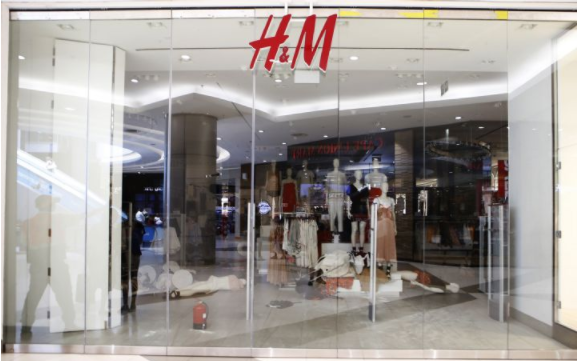H&M, the world's largest apparel brand, is using artificial intelligence (AI) and big data to win back consumers' hearts, hoping to reverse the dilemma of sales decline. According to the Wall Street Journal (WSJ), the 71-year-old fast fashion clothing store is changing the face of retail stores, breaking the long-standing practice of keeping the same merchandise inventory in stores around the world, and instead making shops in different regions different. Sales plan.
Similar to most retailers, H&M relies on the designer's judgment to determine what style of merchandise the consumer wants to buy. But now algorithms are used to analyze store receipts, returns and membership card data to better adjust supply and inventory while reducing price cuts.

H&M's share price has fallen 56% in the past three years, with the same store sales plummeting for 10 consecutive quarters, and clearing $4 billion in inventory at a low price. Retail growth is hindered, and H&M is not facing this dilemma. The emergence of online shopping and new e-commerce platforms has led to a decrease in the number of visits by customers, and apparel brands such as H&M are also trying to attract customers' attention.
Other apparel brands, such as Zara, have robots for some of the stores, which are convenient for consumers to pick up the goods after online purchase; Gap uses Google analysis and market research data to observe consumer preferences. However, the use of granular data analysis such as H&M to distribute in-store merchandise according to local conditions has not yet preceded the retail industry.
Considering the huge scale of H&M, how to use big data to promote to each store is foreseeable as a difficult task. The brand has 4,288 stores, Zara has 2,127 rooms, and Gap has 1,301 stores. Changing the store's operating model will bring considerable cost and effort, but the specific budget H&M is not public.
The long-selling merchandise in the fashionable residential area of ​​Stockholm, Sweden, has been dominated by the basics of men, women and children. These are the items that the management assumes for local customers, but through more detailed purchase and return data analysis. H&M found that the fixed consumers in the store were predominantly women, and the spring-colored floral skirts and high-priced fashion items were unexpectedly good.
At the end of 2017, H&M cut 40% of the original product in the store, especially men's wear, and added tableware, cafes and flower shops. At $6 for T-shirts and $12 for shorts, $118 was placed. More expensive clothing, such as leather bags and $107 cashmere sweaters, to meet the consumption levels and needs of the community, which is dominated by this middle class customer. It is understood that the sales of the store has increased significantly.
In order to grasp the fashion trends 3 to 8 months in advance, H&M even analyzed a large number of social network articles and search engine data, which was decided by the designers in the past.
The 200 analysts at H&M's headquarters analyzed the 5 billion sales data and purchase patterns to determine the next quarter's products, and even the price of the goods is inseparable from the algorithm. Considering factors such as currency fluctuations and raw material costs, algorithms are used to ensure that goods are properly priced when they arrive at the store.
Nils Vinge, head of investor relations at H&M, said that data analysis can work 24 hours a day, from time to time to adjust to the changing behaviors and expectations of customers. H&M also stated that it is not intended to replace the heads of the decision-making class with AI, but to make better decisions for them to make decisions.
300 Puffs,Disposable E Cig Vape,Vape Pen,Vape Pen Starter Kit,Mini Vape Pen
Shenzhen Xcool Vapor Technology Co.,Ltd , https://www.szxcoolvape.com